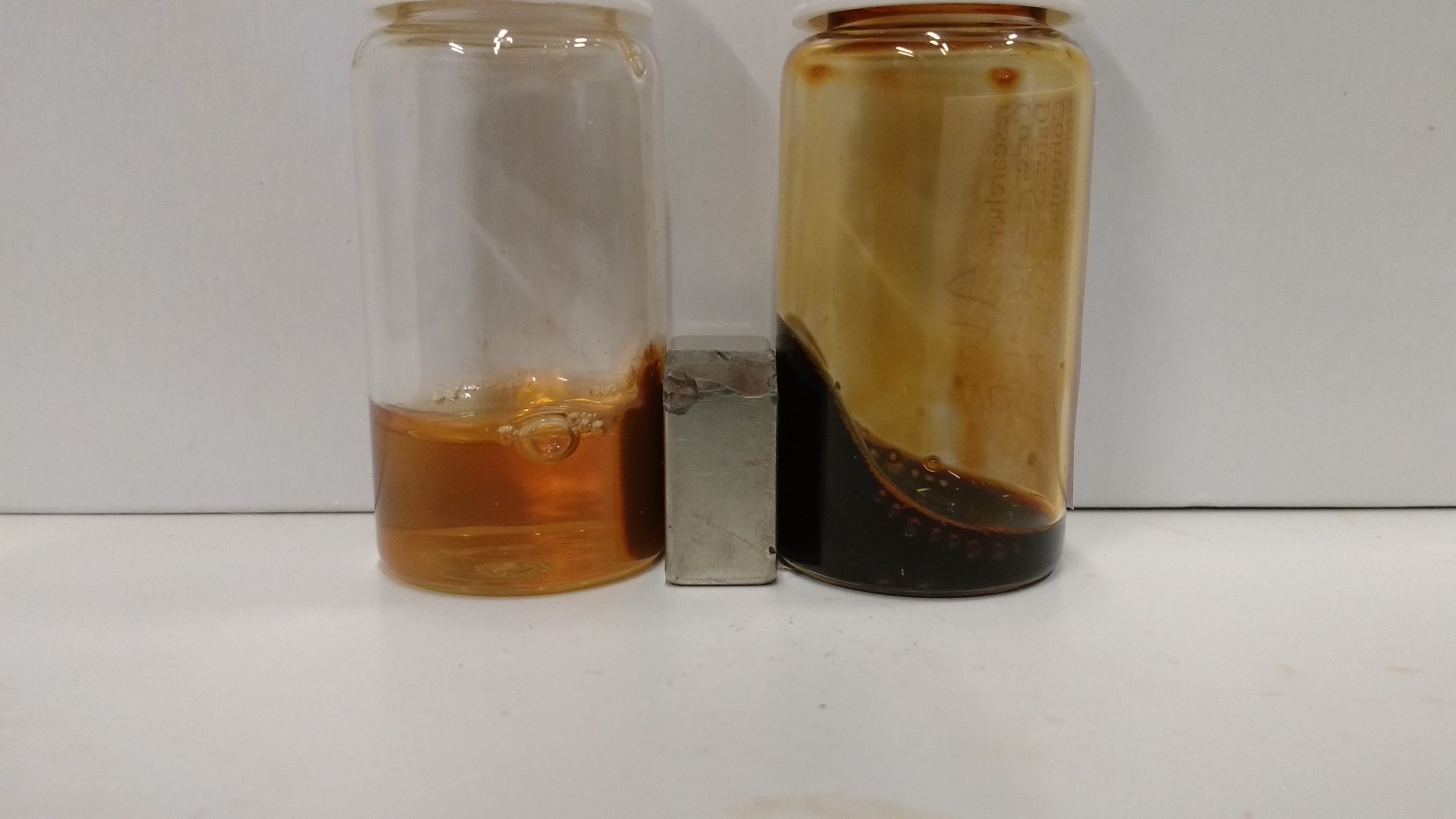
Magnetic separation of waste based on density can now be taken to a whole new level. As researchers from the Dutch cities of Utrecht and Nijmegen have demonstrated that it is also possible to separate heavier elements this way. Consider, for example, precious metals in a discarded telephone.
Magnetic Density Separation (MDS) is a phenomenon that offers many opportunities in a world where sustainability and recycling are becoming increasingly important. Plastic Recycling Amsterdam is the first to adopt it for mixed plastic waste streams.
The underlying principle of the technique is that different materials can be separated according to their weight. Throw a wooden ball and a rock in the water, then the latter will sink like a … brick … and the ball will float. It is a simple example of waste being separated out by the varying density of materials.
Separation in one go
When working with MDS, a magnetic liquid is used in combination with a magnet. Instead of a fixed density, as in the case of water, a second factor is added to the magnetic liquid: a magnetic force. As a result, the effective density in the magnetic liquid differs in relation to the distance to the magnet. This becomes greater closer to the magnet and vice versa. As a result, waste particles with different densities float in the liquid at different heights. This allows waste streams to be separated into various components all in one go.
The crux of this recent research is that this method of waste separation can be sped up. Researcher Alex van Silfhout (Debye Institute for Nanomaterials Science, Utrecht University) explains why.
“Plastic Recycling Amsterdam has already succeeded in their factory in separating a lot of plastic waste into pure plastics, which in turn are used as raw material for new plastics. Since most plastics have a density similar to that of water, no powerful magnetic fields are needed. We have now been working on taking this method to the next level so that you can also separate materials with a higher density using an extremely powerful magnetic field. We wanted to know whether the same principle would then remain valid. Up until now, there had been no experimental research into this.”
The challenge: a stable magnetic liquid
The challenge for the Utrecht and Nijmegen researchers was keeping the magnetic fluid stable. It is well known that the stronger the magnetic forces become, the sooner the liquid containing nanoparticles of iron oxide disintegrates.
Van Silfhout: “Those nanoparticles in the magnetic liquid are a specific form of rust, tiny magnets, as it were. They have a tendency to move towards the magnet that is used in this separation process. They also attract each other and can clump together. In that case, the only thing that is left in the liquid is a clump and water. That’s fairly dramatic.”
“So, in order for the magnetic fluid to remain stable, you have got to keep these particles apart. You can do that by giving them a powerful charge. They then repel each other and keep a distance between each other. This is tricky in practice because there will always be a couple of them that will form a cluster. This is especially critical in stronger magnetic fields. Because the stronger an external magnetic field, the more the nanoparticles seek each other out.”
“Collaboration with Nijmegen had been sought,” Van Silfhout adds, “because we have access to a high-intensity magnetic lab here, which can make a frog hover in the air, to name a weird example.” It is officially called the High Field Magnet Laboratory, which scientists from all over the world are keen to make use of.
Lab Nijmegen: ultra-powerful magnet
“The remarkable thing about the magnets in this lab is that extremely powerful magnetic fields are attainable. This is even achievable over a relatively large volume, allowing us to conduct lots of experiments at the same time.”
“We have done experiments with an in-house magnetic liquid, but also with commercially available variants. We are able to conclude that the magnetic fluids currently on the market are not good enough for these types of powerful magnetic fields. Our liquid is though. This magnetic fluid remained stable at high magnetic strengths, which are needed in order to separate high-density materials.”
Van Silfhout mentions copper as an example of one such element, but also other precious metals in a phone can be sorted all at once with an adjustment of the MDS.
“If, for example, you break an old phone into bits and pieces, you could separate them and re-use them as pure material. Or imagine a printer or other electronics that can be treated with MDS. You’re left with valuable materials such as precious metals that can earn you a pretty penny when they are reused. This method of separating waste can, therefore, have two advantages: it’s economic and environmentally friendly.”
Each one a piece of the puzzle
The practical application of the new magnetic separation method should indicate within what time frame the new method can be introduced. Van Silfhout points out that the research published in The Journal of Physical Chemistry Letters (Colloidal stability of aqeous ferrofluids) is ‘just’ one piece of the puzzle.
“The research into Magnetic Density Separation has been going on for some time already. Technical universities in the Netherlands are each working on part of the solution. For example, Twente is focusing more specifically on the magnet, Eindhoven on the flow of fluids while Delft is responsible for the engineering. All these elements have to be watertight before it can work as a whole”.
To date, the Plastic Recycling Amsterdam factory is regarded as the best example of the successful application of Magnetic Density Separation. Plastic waste is collected in the port of Amsterdam from various parties such as waste processors and municipalities.
In the past, these different plastics had to be sorted by hand or placed in small pieces in normal liquid, whereby one part sank and the rest stayed afloat. This is a costly method and results in only a relatively rough selection.

